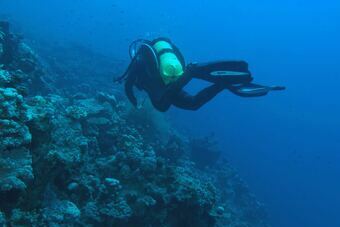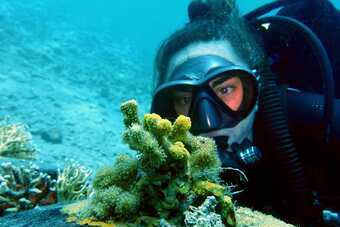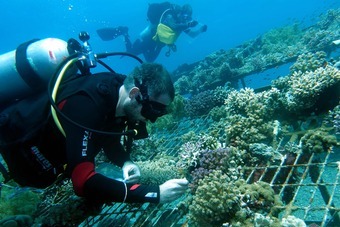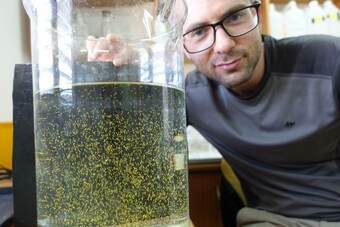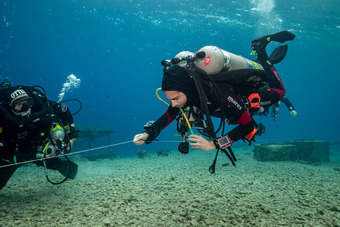Publications:
Liberman et al. 2018
Mesophotic coral-reef ecosystems (MCEs) are light-dependent communities occurring at 30 to ∼150 m depth in the clear waters of tropical and sub-tropical regions. The extent to which MCEs and shallow benthic populations are connected, and whether coral sexual reproduction is maintained under the mesophotic environmental conditions, are still unclear. Despite the trend of increasing studies concerning the MCEs, the reproductive traits of MCE Indo-Pacific octocorals have remained uninvestigated to date. The current study engages with two common zooxanthellate octocorals in the northern Red Sea: the internal-brooder Ovabunda spp. and the surface-brooder Rhytisma fulvum fulvum. It addresses the hypothesis that, similar to their shallow-zone conspecifics, the upper mesophotic populations also reproduce sexually. We analyze the reproductive traits of tropical, upper mesophotic octocoral populations and compare them for the first time to the traits of their conspecifics on shallow reefs. In addition, we discuss the timing of surface-brooding events in relation to lunar phase and daily seawater temperature. The populations of Ovabunda spp. in the upper MCE and shallow-water display several similar reproductive traits (e.g., maximal gonad diameter and fecundity). Consequently, this species seems to be a successful depth-generalist. In contrast, the reproductive features of R. f. fulvum differ between the reefs in the upper MCE and in those shallow-water, with a decreased abundance of female colonies, lower fecundity, and a lower percentage of colonies exhibiting surface-brooding in the former. It thus seems that the R. f. fulvum population encounters certain constraints in the MCE that may, in turn, lead to its reduced reproductive performance there. In addition, surface-brooding events for R. f. fulvum in the upper-mesophotic zone and in shallow-water were separated by two weeks. Since a distinctive seawater temperature rise preceded each surface-brooding event, temperature regimes at different depths may present extrinsic cues that influence the timing of reproduction. The findings from this study contribute to our understanding of the life-history of mesophotic benthic inhabitants in general and of octocorals in particular. Overall, the current findings reinforce the viewpoint that the refuge potential of MCEs may be reflective of species-specific reproductive traits.
12- 45 m
Mesophotic “mentions”
93 x (total of 7371 words)
Classification
* Presents original data
* Focused on 'mesophotic' depth range
* Focused on 'mesophotic coral ecosystem'
Fields
Reproduction
Focusgroups
Octocorallia (Soft Corals)
Locations
Israel - Red Sea
Platforms
SCUBA (open-circuit or unspecified)



